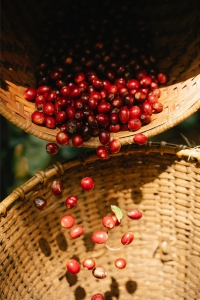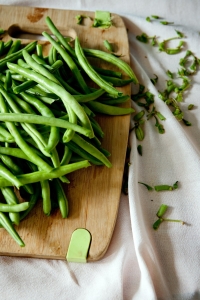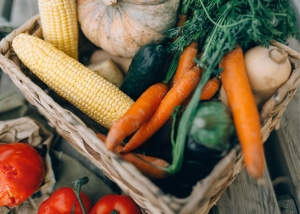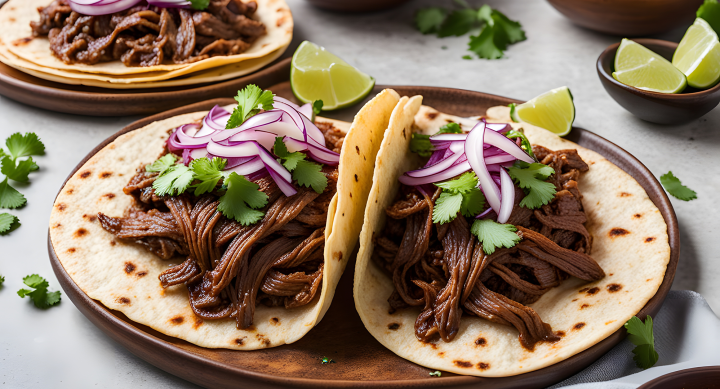Feeling the fall vibes? Fall is my favorite season of the year, bringing crisp temperatures and colorful landscapes. The change of colors is also a good reminder to add more of nature’s color to our plates.
Why eat fall fruits and vegetables?
Seasonal fruits and veggies are often better for your health when eaten in the proper season; they are more nutrient dense because they have matured on the vine instead if being picked too early. Eating fruits and vegetables is an important part of a healthy diet and may help prevent chronic diseases such as heart disease, diabetes, and cancer.
Fall is when most people start dreaming about and eating comfort foods, but there are plenty of ways to take advantage of the season’s fruits and vegetables in a comforting, but healthy, way. The following seven fruits and vegetables are flavorful and healthy options to eat this fall and include in your holiday meals plans.
FALL FRUITS
Apples are among the world’s most popular fruits. They are high in vitamin C, fiber, and full of antioxidants. They moderate blood sugar levels, promote gut health, and are a great addition to a weight loss regimen when eaten as a snack between or before meals (1). Apples can be eaten in a variety of ways. Snack on them whole or slice one up and drizzle it with nut butter (if not allergic) and granola to make “apple nachos” (check out this recipe from Simple Veganista). Try making your own applesauce: peel, slice, and place them in a crock pot with cinnamon (bonus—it’ll make your house smell amazing!). You can also sneak apples into baked goods like muffins and breads. One of my go-to breakfasts is a cup of oatmeal topped with sliced apples. For lunch, I’ll dice one up and add it to a spinach salad topped with a light balsamic vinaigrette.
Bananas, our “golden superheroes,” are a healthy source of potassium and vitamins B6 and C—and are rich in fiber and various antioxidants. They are among the most important crops in the world and can be eaten daily to fight against heart disease and promote colon health and digestion(2). Bananas can be eaten healthfully in moderation any time of the day. You can easily add chopped banana and a handful of blueberries to oatmeal for breakfast, bake them in the oven with lemon juice and cinnamon to make your own banana chips, or quickly prepare a peanut butter and banana sandwich on whole wheat bread for lunch—popular among kids and adults alike(3). Another easy way to add them to your diet? Make a smoothie! Throw one frozen banana, a handful of berries, organic yogurt, and water or milk into the blender for a quick and easy breakfast, lunch, or snack (you can even add in a handful of spinach—it won’t change the taste and will add in extra vitamins, plus it will turn your smoothie a fun green color)!
Cranberries are labeled a “super food” for good reason! Rich in antioxidants, potassium, and calcium, cranberries also come loaded with the immune-boosting vitamin C. Protecting against liver disease, lowering blood pressure, and improving eyesight and cardiovascular health, cranberries are a powerhouse fruit(4)! Many people get their cranberry fix with juice, but it can be loaded with added sugar. To get the most out of cranberries, eat them whole and raw. Toss them into a salad, blend them in a smoothie, or add them to oatmeal for a sweet and sour pop of flavor. Or enjoy them the classic way—as a jelly or sauce during an upcoming holiday meal. What would Thanksgiving be without cranberry sauce on the table? Consider making it a condiment you can enjoy all year long, spreading it on toast, pancakes, or biscuits. Here’s a quick and easy recipe from Cookie & Kate you can try.
FALL VEGETABLES
Broccoli. I know, I know. These little green fluffy flowers may not be a fan favorite, but they pack an incredible amount of nutrients and, with the right recipes, can be addictively delicious. Broccoli combats inflammation, supports immunity (broccoli contains more vitamin C than an orange!), and may reduce risk of certain cancers(5). In my opinion, raw and steamed broccoli beat boiled broccoli every time! Broccoli is great on its own but can also be added to a stir fry or shredded into a slaw and topped with your favorite seasoning. Chop them up (florets and stalks together) and put them into omelets, pastas, salads, and soups or even as a topping on baked potatoes!
Green beans have a high concentration of vitamin K and calcium that can improve bone health(6). And according to Harvard Medical School, consuming more iron from plant-based vegetables such as green beans can promote fertility. When cooking green beans, choose fresh or frozen instead of canned (which have very high sodium content). If you do need to use canned green beans, drain and rinse them first—this will help remove some of the unnecessary salt. Many types of green beans can be eaten raw: I love snapped peas (and my kids have fun breaking off both ends), which I’ll eat plain or dipped in hummus. They’re a great addition to any salad, too. One of my favorite ways to serve green beans to my family is by roasting them. I toss them with olive oil, cracked pepper, and garlic and roast them in the oven for 20-25 minutes at 425°F, turning them after about 10 minutes so the bottom side doesn’t burn. You can also top fresh green beans with marinara sauce and sprinkle Parmesan or Romano cheese on top for a light, tasty snack or side dish.
Cholesterol-free, fat-free, and low in both sodium and calories, not many vegetables can beat the carrot’s range of beneficial nutrients (not to mention the fun pop of color it adds to your plate). This vegetable is packed full of vitamin A, vitamin K, and potassium and is low in carbs; they simultaneously help improve dental health, protect eyesight, and can prevent mental decline and the risk of dementia(7). Carrots can be eaten in a variety of ways! Dip baby carrots into hummus or light ranch dressing for a quick and easy snack. Add them as a salad topping by shredding them with a cheese grater. Slice some carrots and add them to your next soup or stew or marinate them in Italian dressing and serve them as a side dish or topping for dinner. Roasting carrots always brings out their natural sweetness and can even be added to a smoothie or go straight into the blender to make carrot juice!
Red, Russet, and sweet potatoes can be enjoyed in a variety of ways: baked, boiled, mashed, or fried. During fall and the holidays, common potato recipes include mashed potatoes (replace milk with low-fat chicken broth for a healthy alternative), baked sweet potatoes or yams sprinkled with salt and cinnamon, and red potatoes roasted with olive oil and rosemary. I personally like to keep it simple and cook a potato in the microwave for four to five minutes, topping it with healthy ingredients like cooked broccoli, diced tomatoes, and shredded low-fat cheddar cheese—a quick, easy, satisfying lunch. Keep the skin on the potatoes when you cook them, they’re a good source of potassium, vitamin C, and vitamin B6, which helps the body fight infections and build a strong immune system.
Enjoying fruits and vegetables will help keep you healthy as the weather cools. And with the holiday season approaching, now is a great time to incorporate good eating habits so you go into the new year strong. To learn more about what’s in-season, check out the USDA’s Seasonal Produce Guide and have fun experimenting with new recipes that will bring the sweet aroma of fall into your home!
Angela Gordon, Certified Nutritionist and Fitness Instructor at VASA Littleton
RECOMMENDED
SUBSCRIBE TO OUR BLOG
Enter your email to start receiving our blog emails!














